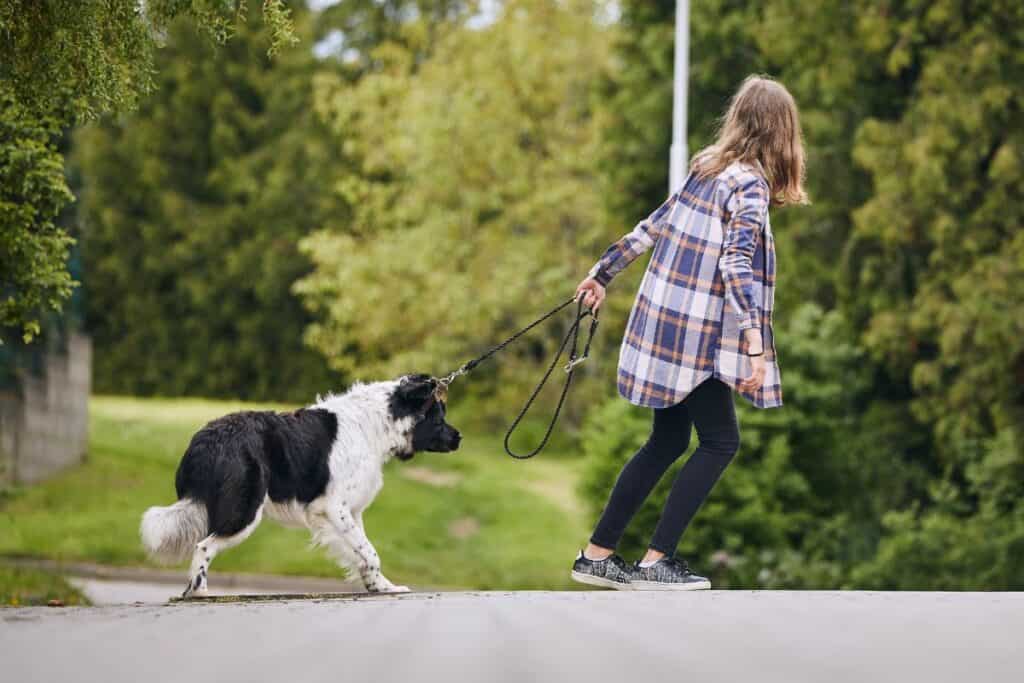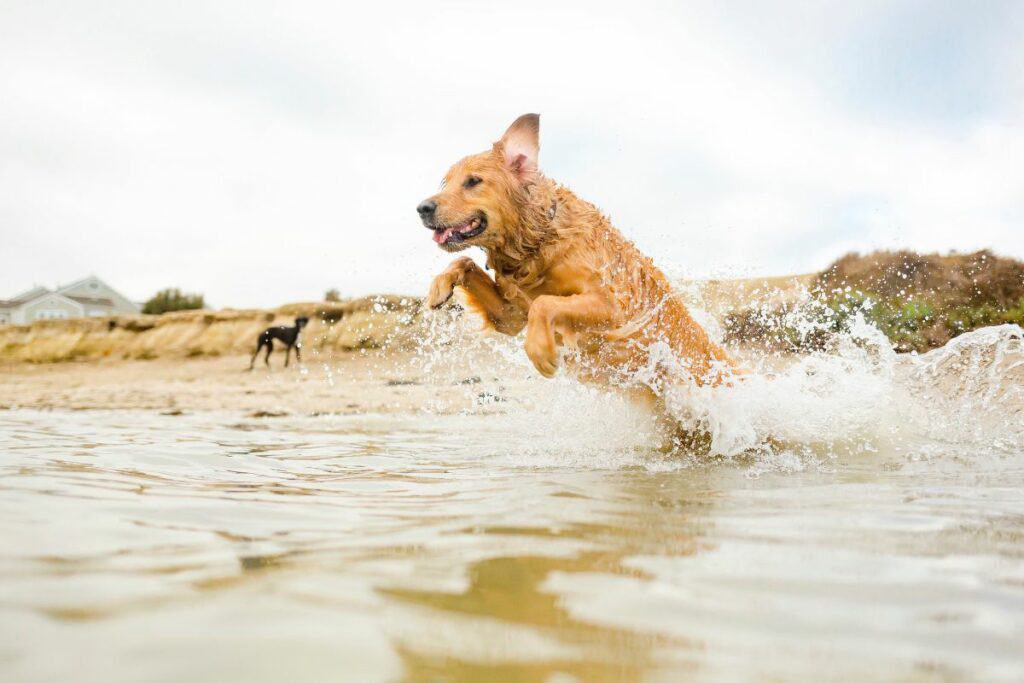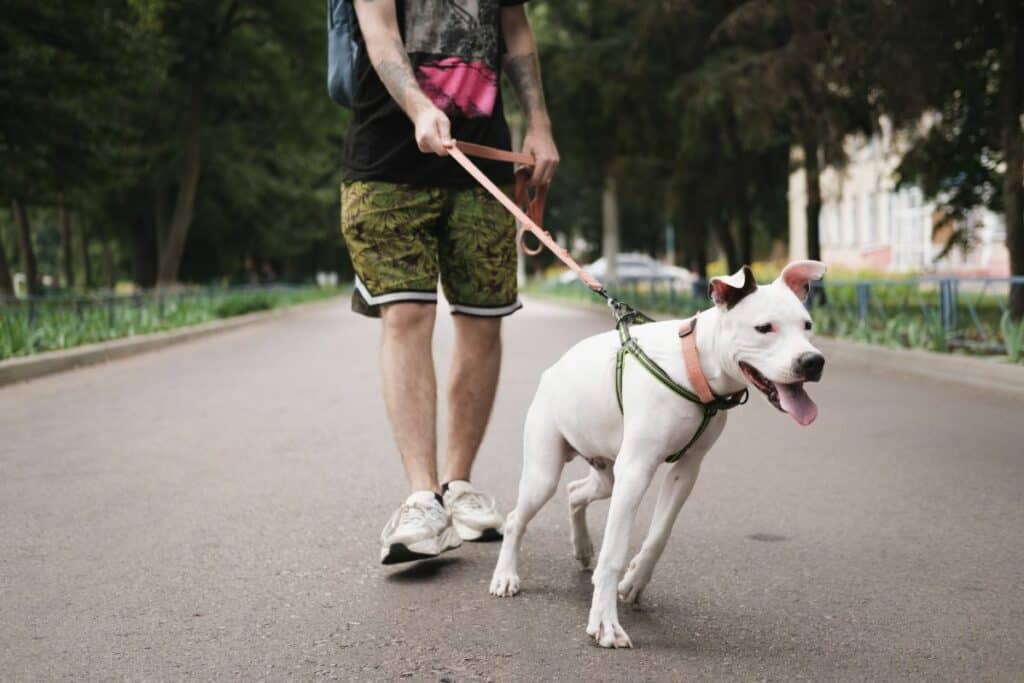Most pet parents can relate to the frustration of training a new dog that just won’t listen. This is a common challenge when practicing recalls, getting your dog to pee outside, or when going on walks. No matter how hard you try, the dog is just too ‘stubborn’, and it’s easy to give up. In this article, I will teach you how to train a stubborn dog, but first we must address the concept of stubbornness and how labeling your dog can prevent you from achieving your training goals.
What makes a dog ‘stubborn’?
When we consider a dog stubborn, it usually means one thing: we are confident the dog knows what is being asked of him and he is choosing to disobey. If this were true, it would be very frustrating. The problem with this belief is that it anthropomorphizes dogs (considers them like humans) and projects our thoughts and feelings onto them, when dogs don't have the complexity of thought to be stubborn.
Dogs don't inherently possess a sense of stubbornness. What many interpret as stubborn behavior is often a sign of confusion, fear, or a lack of understanding of what is being asked. Recognizing the true nature of your dog's behavior is crucial for effective training. Understanding that dogs react to their environment and our cues, rather than willfully disobeying, changes the entire approach to training.
Why Labelling is Always Bad
Nearly every challenge pet parents face when dealing with unwanted behaviors is caused by poor communication and/or an underlying fear or emotion. The majority of pet parents are not trained to properly read canine body language. Most would consider a wagging tail a sign of a happy dog or rolling over and exposing their belly as an invitation to engage. These behaviors are clues to a dog’s emotional state but never definite. We cannot know what is being communicated without looking at the bigger picture. We must see what the rest of the body is telling us and the circumstances in which they occur.
Because we are poor at reading dog body language, we often don’t see what’s right in front of us and we commonly misread our dogs. In return, it is harder for our dog to understand us because we don’t know how to speak their language. These barriers to healthy communication cause us to commonly misunderstand and mislabel our dog.
Labelling a dog, however accurate, can prevent us from making progress in our training and building a healthy relationship.
Example
Consider a dog what loves to run around in the back yard, but when it’s time to come in, no matter how many times you say “come”, they don’t return. If we label this dog as stubborn, we are accepting a fact that is out of our control. It becomes an excuse for why training isn’t working and there’s no fixing it because some dogs are just stubborn. When we feel trapped and have no solution, it causes our emotions to increase and we often take it out on the dog by yelling louder or even using physical force to get what we want. This just further damages the relationship and makes training harder.
In reality, the dog above has one of three things happening: he is distracted by his environment and can’t focus, he doesn’t understand what we are asking of him, or he is dealing with fear, stress, or anxiety that causes him to act out of character. Considering any of these reasons, there is a logical solution and when we have a light at the end of the tunnel it’s easier to stay calm and patient.
All labeling does is prevent us from finding a solution, making it feel impossible to overcome training challenges.
Identifying Signs of a 'Stubborn' Dog
Common behaviors misinterpreted as stubbornness include ignoring cues, pulling on the leash, or not responding to a recall. These behaviors are often a sign of a lack of understanding or distraction, rather than a refusal to obey. It's vital to observe your dog's body language and the context of the behavior to determine the root cause.
Most Commonly Perceived ‘Stubborn’ Dog Breeds
Some breeds are often labeled as more 'stubborn' due to their independent or strong-willed nature. Breeds like the Siberian Husky, Bulldog, and Beagle are known for their tenacious personalities. However, it's essential to recognize that each dog is an individual, and breed tendencies do not dictate the behavior of every dog in that breed. Understanding your dog's breed traits can be helpful in tailoring your training approach.
Effective Training Strategies for 'Stubborn' Dogs
Training a dog that doesn't immediately respond to cues requires patience, consistency, and an understanding of dog psychology. Here are some key strategies:
- Positive Reinforcement: Always use positive reinforcement. Rewards like treats, praise, or playtime make training a positive experience and can help prevent behavior fallout caused by punishment.
- Consistency: Be consistent with your cues and expectations. Inconsistency leads to confusion and can slow down your progress.
- Short Training Sessions: Keep training sessions short and fun. Long sessions can lead to frustration for both you and your dog, especially if they are a puppy.
- Create a Positive Training Environment: A positive environment is key to successful training. This means creating a safe, stress-free space where your dog feels comfortable and motivated to learn. Avoid harsh methods or punishments, as they can damage your relationship with your dog and worsen the behavior.
- Understand Your Dog's Perspective: Try to see the world from your dog's point of view. What might be distracting or frightening to them?
Overcoming Specific Challenges
Recall Training
Use high value treats and a cheerful voice. Practice in a secure area and gradually increase distractions. Most common mistake in recall training is increasing your criteria too fast.
Consider starting just a few feet away from your dog. Once they have an 80% success rate, you can then increase the criteria. Slowly increase the distance or the level of distractions until you have your desired behavior.
Walking Calmly on a Leash
Start in a quiet area with no other dogs or people. Use treats to reward calm behavior. If your dog pulls, stop walking until the leash has slack.
The greatest challenge with leash skills is engagement. Because the world is full of enticing distractions, it is our job to be the most exciting thing in your dog’s life so they would rather focus on you than the environment. Be dynamic and use high value treats to reward your dog for staying focused.
Encouraging Peeing Outside
Establish a routine. Take your dog out at regular intervals and reward them immediately after they do their business outside. If your dog struggles to go potty when let out, there may be environmental factors to consider.
Some dogs will hesitate to go out in the rain or snow. Others may be too distracted by the environment. Learn your dog’s preferences and come up with a solution to set them up for success. A common solution is to designate a potty space that is separate from the rest of the yard. Most dogs will associate a backyard with play and exercise. To set clear expectations, only play in one side of the yard, and designate another side for potty time.
Frequently Asked Questions
A scared dog often shows signs of anxiety like panting, whining, or avoidance. In contrast, a dog that doesn't understand what's being asked may simply appear disinterested or distracted.
The most effective rewards vary depending on your dog's preferences. Common rewards include treats, favorite toys, praise, and playtime. It's essential to find what motivates your dog the most.
The time it takes can vary widely depending on the dog's age, breed, personality, and past experiences. Consistency and patience are key, and progress, even if slow, is a positive sign.
Yes, some breeds like Huskies, Bulldogs, and Beagles are often perceived as stubborn due to their independent nature. However, this doesn't mean they can't be trained; it may just require a different approach.
Use a harness to prevent pulling, bring treats to reward calm walking, and start in a quiet area. If your dog pulls, stop walking until they calm down, then continue.

Joseph Schifano is the President of The Academy of Pet Careers and Founder of DogNerdly.
With over 20 years of professional pet experience, Joseph got his start as an owner/operator of a 7-figure, all-inclusive pet care business. From there, he purchased The Academy of Pet Careers with a hopes of improving the quality of care provided by industry professionals. This role allowed Joseph to rub shoulders with some of the biggest names in the industry, and gain knowledge in every aspect of pet care.
After witnessing the popularity of social media influencers and the amount of misinformation being taught to pet parents, Joseph decided to create DogNerdly. The goal was to provide science-backed education for the average dog nerd in order to create a world where dogs and humans can live a more harmonious and empowered lifestyle.




